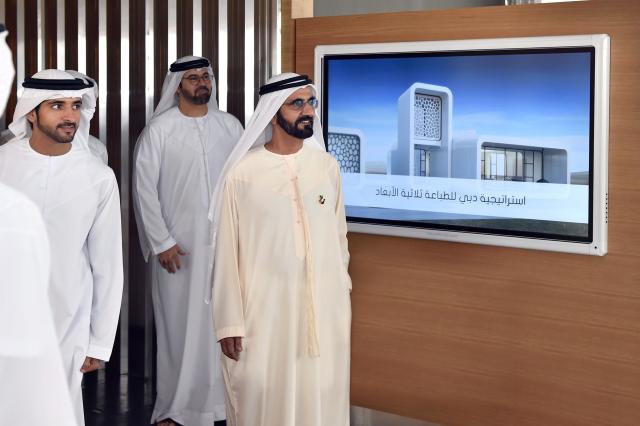
The United States launched its pilot institute for 3D printing, America Makes, in 2012, following up with several more in the proceeding years.
The South African Additive Manufacturing Roadmap Development Project was created in 2013; the United Kingdom opened its own $21.9 million Manufacturing Technology Centre in 2015; and the Australian government established a $4.6 million 3D printing lab also in 2015.
Governments the world over have been initiating national 3D printing development programs, creating a domino effect in which subsequent governments must do the same to keep up with the global competition. The latest such initiative comes from Dubai, where the Middle Eastern nation has developed the Dubai 3D Printing Strategy, with which the country seeks to become the leading hub for 3D printing by 2030.
In an event announcing the strategy, the Vice President and Prime Minister of the United Arab Emirates and Ruler of Dubai, Sheikh Mohammed bin Rashid Al Maktoum, laid out the country’s five-pillar plan to become the world’s hub for 3D printing through three specific sectors: construction, medical products and consumer products.
According to Sheikh Mohammed, the country will begin by increasing the use of 3D printing in the construction industry by 2 percent starting in 2019, with the belief that 3D-printed construction will be valued at Dhs 3B (approximately USD$817 million) by 2025. In terms of medicine, the leader sees the local industry producing teeth, bones, organs, devices and hearing aids all with 3D printing in the future, anticipating a total value of Dhs 1.7B(approximately USD$463 million) by 2025. For the consumer sector, Sheikh Mohammed sees a value of Dhs 2.8B (approximately USD$762 million) by 2025, with the local industry producing 3D-printed household items, optics, jewelry, games and even fast food.
To accomplish all of this, the Dubai government will work on five different pillars: infrastructure, legislative structure, funding, talent and market demand. While the legislative front will see the country develop the proper regulations, including materials specifications, for 3D printing, the infrastructure pillar will focus on supporting R&D related to 3D printing in order to attract companies worldwide. For this, Dubai will work to cultivate local talent around 3D printing. In order to get new 3D printing developments adopted, the technology will be promoted to the applicable sectors. Of course, all of this will require funding, with the Dubai government developing financing alternatives and investment support for various 3D printing projects.
Read more at ENGINEERING.com

